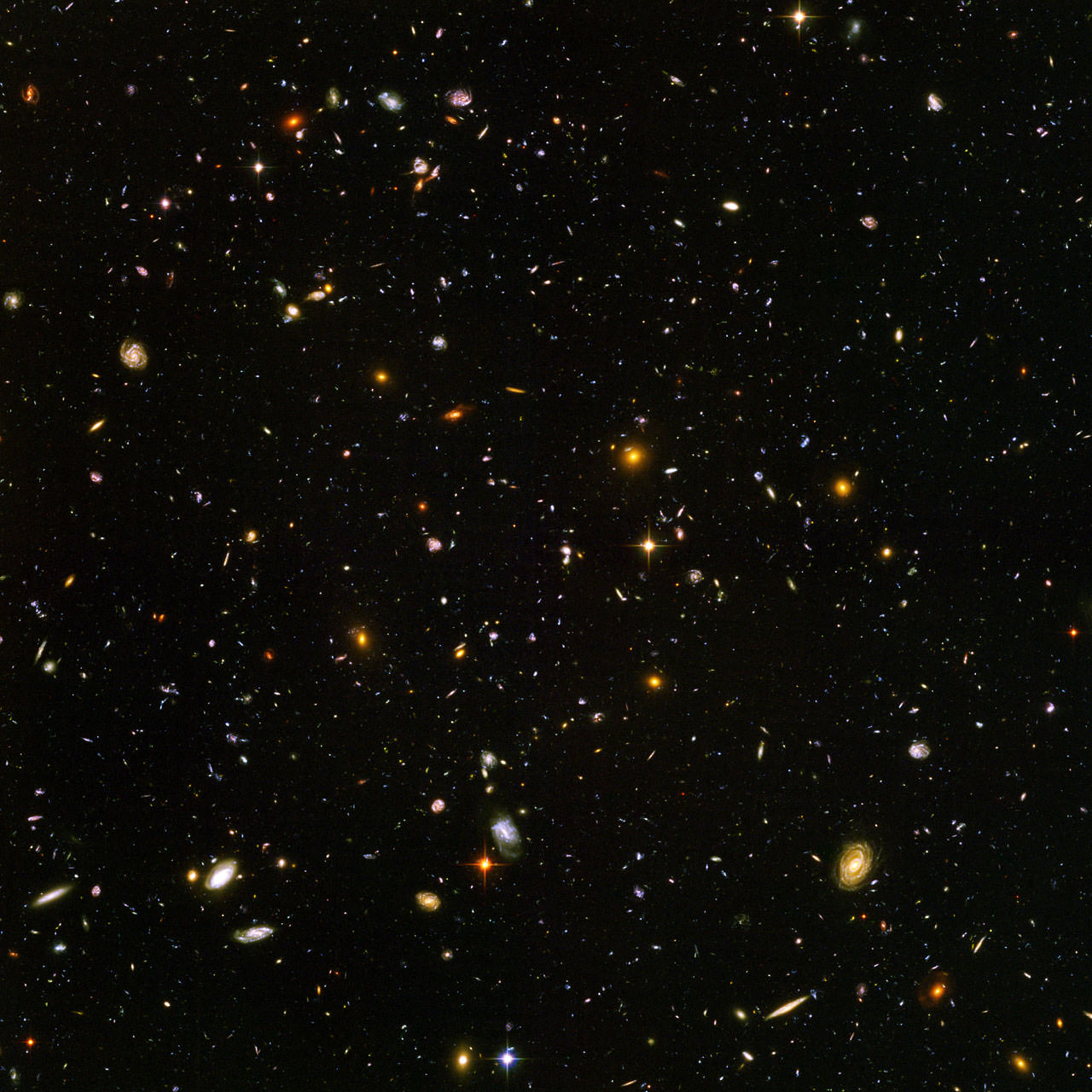[/caption]
Note: To celebrate the 20th anniversary of the Hubble Space Telescope, for ten days, Universe Today will feature highlights from two year slices of the life of the Hubble, focusing on its achievements as an astronomical observatory. Today’s article looks at the period April 2004 to April 2006.
First, in 1995, there was the Hubble Deep Field (HDF). Then, in 1998, the Hubble Deep Field South (HDF-S). With the new Advanced Camera for Surveys (ACS) aboard, and the Near Infrared Camera and Multi-object Spectrometer (NICMOS) continuing to work well, the Hubble took a new, even deeper, image. And what was it called? Why, the Hubble Ultra-Deep Field (HUDF) of course! The total exposure was approximately a million seconds, and the observations were made in late 2003 and early 2004 (Earliest Star Forming Galaxies Found is Universe Today’s first story on it). Hundreds of scientific papers have been published using data from these observations (and others; a lot of time on major ground-based telescopes has also been devoted to these fields).
In its more than a decade of operation, the Hubble’s main astronomical instruments worked well. Sure, they needed various repairs and were upgraded in one way or another during the four servicing missions to date (remember that 3 was split into two, 3A and 3B), but none failed completely. Well, in August 2004 STIS (the Space Telescope Imaging Spectrograph) did.This intensified the gloom created earlier in the year when NASA Director announced that there would be no more Space Shuttle missions to the Hubble, and his announcements about possible robotic missions left space and astronomy fans cold.
In April 2006, Hubble turned 16; would you have chosen M82 as a ‘sweet sixteen’ snap to put in your album? Universe Today did!
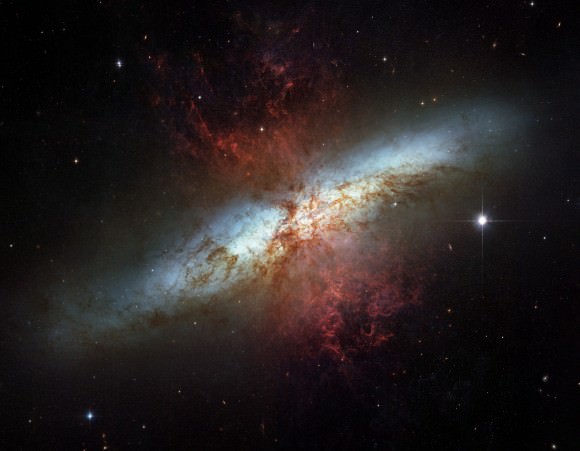
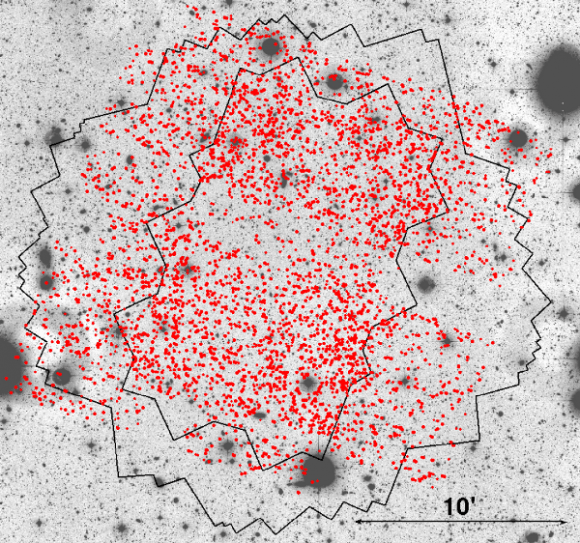
One of the biggest challenges in astronomy today is working out how galaxies formed and evolved. In turn this involves understanding the role of star formation (and its rates), how supermassive black holes accrete matter and create jets, and how dark matter structures form. One powerful way to get at least some answers to the many questions is to point the world’s most powerful telescopes at the same, small, patch of sky for a very long time. Choosing the patch of sky to stare at isn’t easy; for example, ideally you want a ‘hole’ in the Milky Way’s hydrogen, to let you see as clearly as possible in the soft x-ray part of the electromagnetic spectrum. The GOODS team, comprising dozens of astronomers from many institutions, chose two fields, one in the north (centered on the Hubble Deep Field) and one in the south (centered on the Chandra Deep Field-South). The image above gives an idea of what one project involved; the red dots are objects whose spectra were taken (by a spectrograph called VIMOS, on one of the European Southern Observatory’s Very Large Telescopes), overlaid on an image from a ground-based telescope; the contours are the Chandra 2Ms (yes, that’s 2 million seconds) region, and the Hubble ACS GOODS-S field. Over 400 GOODS papers have been published so far, with all sorts of interesting results established. For more information, visit the STScI GOODS website and the ESO one; to get you started, “The Great Observatories Origins Deep Survey: Initial Results from Optical and Near-Infrared Imaging“.
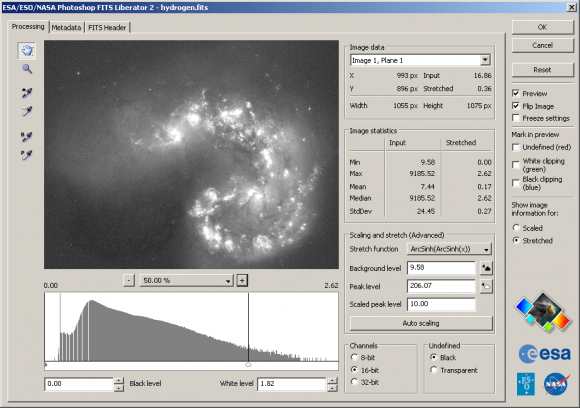
I mentioned earlier – Hubble’s 20th: At Least as Good as Any Human Photographer – that astronomers have their own file format, called FITS, for astronomical data, whether images, spectra, or whatever. Well, FITS is not exactly user friendly (unless you’re an astronomer), so to make the data more accessible, a joint team from the European Space Agency, the European Southern Observatory, and NASA produced the ESA/ESO/NASA Photoshop FITS Liberator, a free plug-in. Why not give it a try?
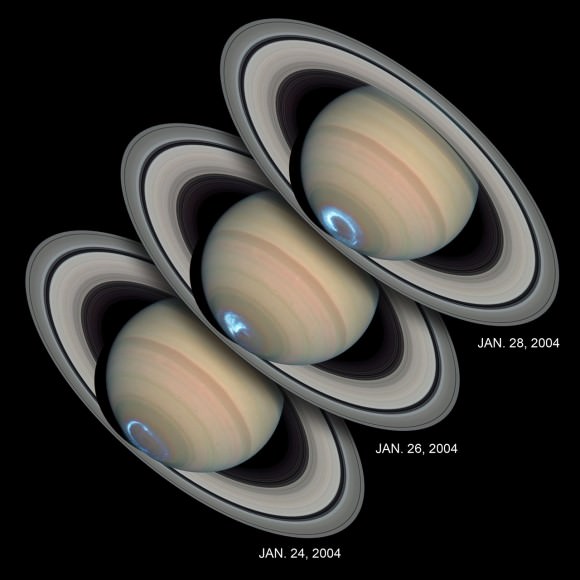
Even though various space probes visit various planets (and their moons), and undertake intensive research of them, good science is still done from afar. Hubble’s studies of Saturn’s aurorae are a good example (Universe Today’s coverage here).
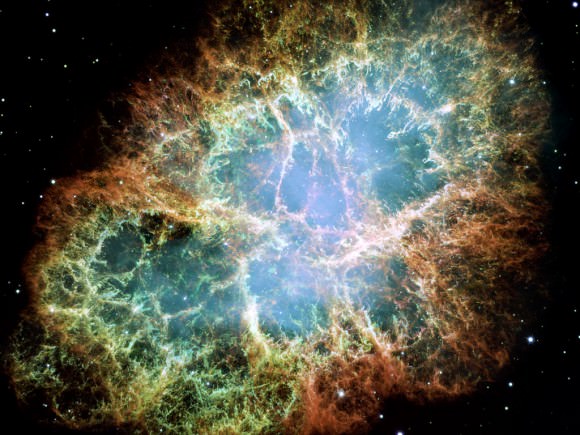
Hubble had taken many images of the Crab Nebula before (see Hubble at 8: So Many Discoveries, So Quickly for example), but the above was a first, in many ways. It was taken by WFPC2, and is actually 24 separate images; it is the highest resolution image of the Crab, to date (Giant Hubble Mosaic of the Crab Nebula is the Universe Today title).
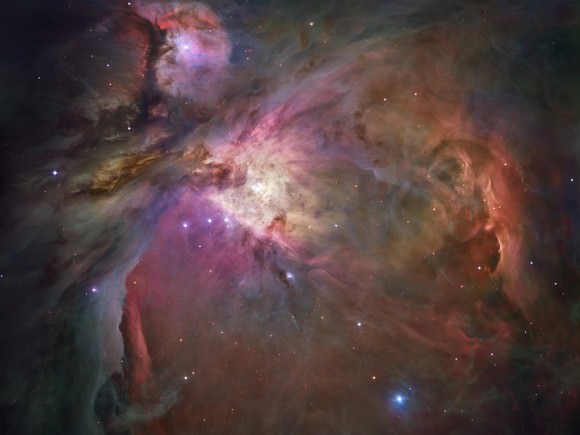
The Orion nebula is the closest ‘star factory’, so receives intense scrutiny by astronomers. Hubble pointed all its imaging instruments at it, in 2005, for over 100 orbits. This image is an ACS mosaic (do you know what the other imaging instruments were, then? Best Orion Nebula Image Ever Taken has the answer).
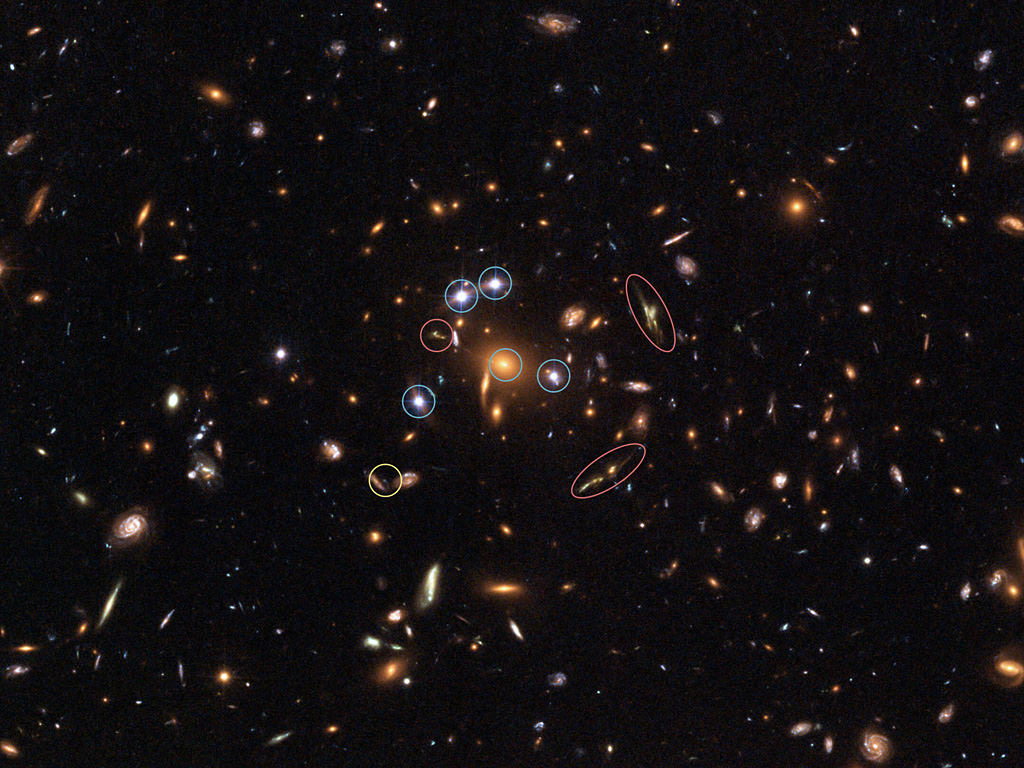
The theory of general relativity predicts gravitational lensing, and this prediction was confirmed in 1919 (do you know how?). When a point source, such as a quasar, is lensed by a foreground object such as a galaxy cluster, the resulting image will have quite specific properties; for example, only an odd number of images, but one image is usually very weak and embedded deep within the light of the lensing object itself. Four images produced by SDSS J1004+4112 (the foreground cluster) had been detected before, but Hubble found the fifth (the blue circles are the quasar, the red a lensed galaxy, the yellow a supernova). Hubble’s Best Gravitational Lens is the Universe Today article on this discovery.
Tomorrow: 2006 and 2007.
Previous articles:
Hubble Enters its Teen Years, More Powerful, More Ambitious
Hubble’s 20th: At Least as Good as Any Human Photographer
Hubble’s 10th Birthday Gift: Measurement of the Hubble Constant
Hubble at 8: So Many Discoveries, So Quickly
Hubble’s 20 Years: Now We Are Six
Hubble’s 20 Years: Time for 20/20 Vision
Hubble: It Was Twenty Years Ago Today
Sources: HubbleSite, European Homepage for the NASA/ESA Hubble Space Telescope, The SAO/NASA Astrophysics Data System

